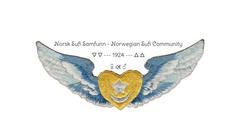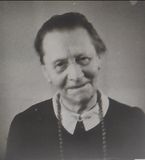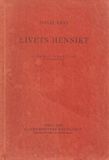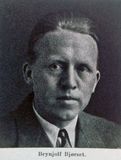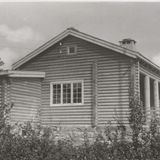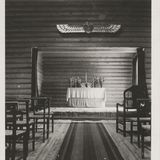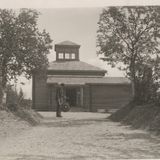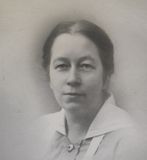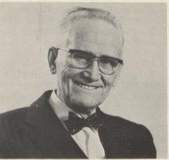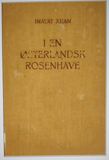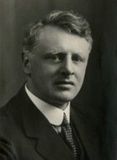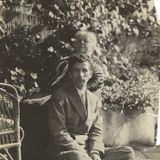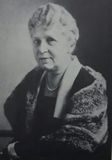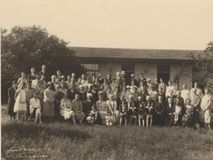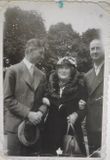Sufi.no
A Path of Spiritual Liberty
If you have information and/or documents, pictures or tips, wich can be of interest to our archive, feel welcome to take contact!
The Norwegian Sufi Community, also known as Norsk Sufi Samfunn, has a rich history from 1924. During that year, the founder of the Sufi Order in the West, Hazrat Inayat Khan, visited Norway and delivered a lecture at the University of Oslo, translated into Norwegian by Shamsher. At this time, Inayat Khan met Susanna Lovise Kjøsterud, a significant figure in developing Sufi work in Norway, who became the National Representative for the message in Norway.
On August 17, 1929, the council was established. Lucy Goodenough and Sirdar van Tuyll supported the Sufi work in Norway over time. Miss Goodenough gave a follow-up lecture after the visit of Inayat Khan at the Nobelhall in Oslo in 1925.
Today, the Norwegian Sufi Community boasts an archive of over 2,300 digital scans of original documents, including personal and organizational notebooks, pictures, lists, books, lectures, speeches, initiation cards, and diaries dating back to 1924.
After Inayat Khan's passing, Murshida Goodenough and Baron van Tuijl provided the community with the necessary teaching papers from Murshid. Susanna recalled in one of her writings that Hazrat Inayat Khan had told her, "You will never be without papers and teachings. If necessary, I will dictate them to you in person." This statement is a testament to the legacy of the Norwegian Sufi Community, which has remained dedicated to the Sufi message for almost a century.
17 August 1929 (source: Notebooks)
The Counsel of Norsk Sufi Samfunn was established:
Susanne Kjøsterud (Siraja) as National representant,
Karl Salomonsen (Sajwar) represented the Universal Church,
Marie Johansen (Iman) represented the Brotherhood,
Halvor Egeberg (Akbar) was Cashier,
Gyda Haabjørn (Kathidja) Secretary.
Upon the founding of the Counsel, Susanne Kjøsterug purchased a cabin in Skeikampen and named it Baroda in honor of Inayat Khan's birthplace. Weekly Universal Worship and various other activities were organized at the cabin until the end of 1932. Additionally, the cabin served as a sacred space for the initiation of many early Sufis. However, after Suzanna's passing on October 2, 1932, the Sufis were no longer granted access to the cabin.
Baroda Cabin (source pictures: Sajwar)
The Baroda cabin still exists. The name Baroda is now also the name of several big cabin area's around the former Sufi Cabin.
After the passing of Suzanna, Sajwar was appointed National Representant. The council members searched for a new place for the Sufi community; now, the Baroda Cabin was no longer available. In the meantime, there were still events and a yearly summer school in Skeikampen, as far as we know, in a big room from the nearby Gausdal Sanatorium. That room was called the Sufi Hall. The weekly Universal Worship was moved to a place in Oslo.
--ooOOoo--
In the spring of 1936, Sajwar moved to Switzerland, and Halvor Egeberg (Akbar) became the National Representative on the 14th of April 1936. John Egeberg (Munir) was added to the council as the fifth member to replace Sajwar at the same Counsel Meeting.
In 1936, a property exclusively for the Sufis was located in Harlitzgate, Oslo, and named "Sufi Home". On November 5th of the same year, the house was inaugurated and attended by 35 people, including 11 cheragas, as per the archive notebooks. An altar was set up in the Sufi Home with flowers around it. The ceremony kicked off with the cheragas gathered around the altar, and Inga Sparre Dahl lit the candles. Kathidja read from the scriptures, and Halvor Egeberg delivered a speech, recalling the arrival of Murshid in Norway on November 5th and the initiation of the first seven mureeds. Astrid Egeberg played the piano, and speeches were given by Hilda Østerberg (Naida) as the representative of Healing, Marie Johansen (Iman) as the representative of the first seven mureeds, and Brynjar Bjørseth (Shamsher), who represented all unorganized Sufis.
Following the Universal worship, also known as Ceremonial Worship, Halvor Egeberg (Akbar) proceeded to bless every room in the building with the eleven cheragas in tow. The notebooks describe the inauguration as both beautiful and harmonious.
The Sufi Home hosted a variety of classes, lectures, and entertainment evenings, along with the Universal Worship, until the Second World War. Some of the classes offered were Gatha I and II, Gatheka, Githa classes, Brotherhood Meetings, general study groups, study groups for leaders, healing groups, and Universal Worship. Most classes were held once a week or once every other week.
The teachers in study classes were Thorolf Becker, Hilda Østerberg, Gyda Haabjørn, Marie Johansen, John Egeberg, Petra Beer, and Halvor Egeberg. The Universal Worship grew in size and was later moved to a separate location that could accommodate up to 100 people. Most classes were attended by 10-15 people, except for the closed leaders' study groups, which were attended by 2-4 people and taught by Akbar and Munir.
Although not much is known about the healing classes, Hilda Østerberg was extremely active. She conducted over 160 healing meetings in her home on Bygdo Allee in Oslo, in addition to teaching classes at the Sufi Home.
An open lecture was held once a month at the Sufi Home on various topics, including intuition, character and development, and past, present, and future. Typically, between 10 and 20 people attended these lectures, often including new people.
From 1930 until around 1935, a summer school was held in Gausdal. After the establishment of the Sufi Home, this activity was absorbed into the activities in the new home in Oslo.
Under Construction
The 5th of November:
The fifth of november will always be a special day for the Sufi community in Norway.
05.11.1924 Visit of Murshid to Norway
05.11.1924 Susanna appointed Nat. Representative
05.11.1932 Burial of Susanna Kjøsterud
05.11.1936 Inauguration of the Sufi Home in Oslo
23.05.1939 (source:notebooks)
Members of The Counsel of the Norwegian Sufi Community:
Halvor Egeberg (Akbar) is National representant,
Hilda Østerberg (Naida) leading the Healing
Gyda Haabjørn (Kathidja)
Thorolf Becker
John Egeberg (Munir)
Quote from Marie Johansen (Iman, 05.11.1936) about Inayat Khan:
"I felt I could safely give myself over to his leading. His mild, shining personality had the quality to lead us. Yes, all people"
Quote from Halvor Egeberg (Akbar,05.11.1936) about Susanne:
"We remember her strong personality, her leading qualities and her sacrificial work for each Mureed, standing with each of them during good and bad times"
